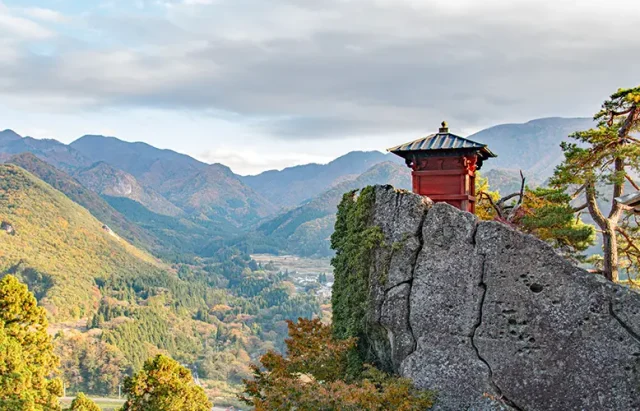
As more travelers turn to nature and mindful journeys for deeper well-being, Oku Japan – a leader in immersive, community-focused journeys into the heart of Japanese culture – is featuring a collection of self-guided walking tours, including one brand-new itinerary, that explore some of Japan’s most sacred routes.
Rooted in centuries-old pilgrimage traditions and steeped in local wisdom, these itineraries invite travelers to move at their own pace, finding calm and inspiration in forested mountain paths, ancient temples, and remote villages where hospitality and reverence for nature endure.
“At Oku Japan, we believe travel is more than visiting places – it’s a chance to reconnect with yourself and the world around you,” says Hiroshi Kawaguchi, general manager for Oku Japan. “All of our tours – particularly our brand-new ‘Spiritual Journey through Yamagata’ itinerary – invite travelers to slow down, breathe deeply, and really feel and experience the places they are visiting, the people who call it home, and the deep-rooted spiritual traditions that have become the very essence of life here.”
Below are a few examples of Oku Japan’s itineraries that prioritize mind and body.
Spiritual Journey through Yamagata: Wander through northern Japan’s tranquil forests, hidden shrines, and hallowed temples on this brand-new self-guided tour that follows a contemplative route inspired by mountain ascetics. In the northern reaches of Japan’s main island of Honshū, discover the enduring connection to Shugendō, a faith that combines elements of mountain worship, folk religion, and Buddhism. Ascetics known as yamabushi practiced here, climbing the mountain trails as a form of meditation and training. On this itinerary, travelers will follow the same storied trails as the Shugendō practitioners of past and present, visit two of the three sacred Dewa Sanzan mountains, connect with local communities who have long safeguarded these traditions, soak in rural onsen, and much more.
Shikoku 88 Pilgrimage: Embark on a section of Japan’s most famous pilgrimage, visiting some of the revered 88 temples scattered across Shikoku Island. This self-guided journey blends meaningful walks along paved towns roads and unpaved forest trails, traditional pilgrim lodging, a chance to bathe at Dōgo Onsen, the oldest onsen hot spring in Japan, and to explore the atmospheric Iya Valley. The Shikoku 88-temple Pilgrimage was founded over 1,200 years ago by the renowned monk Kūkai, and this itinerary highlights some of the most fascinating parts of this 745-mile/1,200-km circuit.
The Kumano Kodō: Stretching into varying corners of the Kii Peninsula, this 1,000+ year old UNESCO World Heritage pilgrimage route follows in the footsteps of emperors and pilgrims alike. Extending across mountain ranges and lush green valleys, through quiet hamlets and bustling hot-spring towns, of the trails that make up the Kumano Kodō, the Nakahechi trail was once considered the imperial route, leading from Takijiri on the western edge of the peninsula and stretching to Shingū on the eastern coast. The sheer number of pilgrims who would march in long processions earned this trail the nickname “pilgrimage of ants,” and it remains the most popular of the routes today. On Oku Japan’s self-guided itineraries, daily walks lead to ancient shrines and secluded villages, offering moments for quiet reflection, forest bathing, and authentic encounters with Japan’s spiritual heartland.





